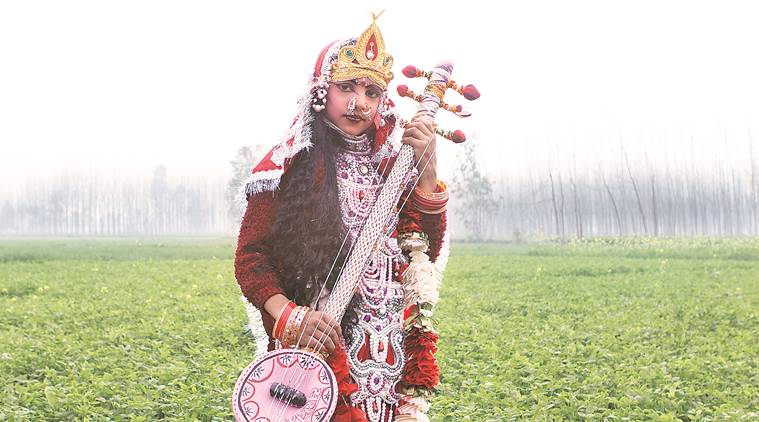 A scene from the documentary
A scene from the documentary
In 2014, Prime Minister Narendra Modi, addressing the inauguration of a hospital in Mumbai, claimed that the physiognomy of Ganesh proved that ancient India was proficient in plastic surgery. In the years since, several politicians from the BJP fold have made such claims regarding ancient India’s achievements in the field of science, rooted in Hindu religious texts. These have included the attempt to validate the mythical pushpak vimaan and the existence of internet technology five thousand years ago, among several other proclamations.
To documentary filmmakers Shirley Abraham and Amit Madheshiya, these instances not only discouraged the spirit of rational thinking but also pushed the misplaced religious idea that India is a nation of and for Hindus. “We were looking for a metaphor to express this moment. And we found it in the furious search, and eventual declaration of discovery, of mythical river Saraswati,” explains Abraham.
In 2016, the duo embarked on a project that would follow the search for the river and the circus it became in Haryana’s Mughalwali village. The result is Searching for Saraswati, a 20-minute documentary for The New York Times, supported by the Sundance Institute-MacArthur Foundation Fellowship, which will be released around the second week of July. Abraham and Madheshiya made The Cinema Travellers, which was an official selection at Cannes in 2016.
The documentary, shot from the ground, follows locals, government representatives, farmers and an RTI activist, and explores how religion is being used to push the agenda of hypernationalism by linking Saraswati with national pride.
However, among all the interesting characters Abraham and Madheshiya encountered, which included a gold diviner and a Donald Trump-quoting godman, they chose as protagonist Sahiram Kashyap, a wiry man who left home for the spot where Saraswati had “appeared”. “Having built a hut and camping in it, he had been diligently praying to the Mother, lighting a lamp, and cleaning the site. He was also documenting details of everyone who has been visiting the site that lies dug up in canals and trenches, for revival of the river — stray archaeologists, pilgrims, government officials, curious village folk, intrepid tourists and visitations from the other world, outside of his imagination. Over subsequent visits, we see women, men and seasons come and go. Kashyap however, set up camp. And sought the answer to the one big question, when will Saraswati flow like he has known through the oral traditions and stories of the ages?” recounts the duo.
In order to provide context, the documentary also follows the locals, their everyday lives, their thoughts and beliefs, the importance they lay on religion and faith, and how that also fuels the ongoing drama in Mughalwali.
Only farmer Jarnail Singh, from the neighbouring village Milkheda, seems not washed over with unquestioning belief. “When we asked him about the declaration of gushing groundwater as mythical river Saraswati, he critiqued to say, ‘They had also brought a sadhu who scooped up some water, drank it, and declared, this was the Mother.’ He pushed his dark glasses in the direction of his upturned nose, and added, ‘as if it was Coke.’ Finding him was exciting and consoling,” says Abraham.